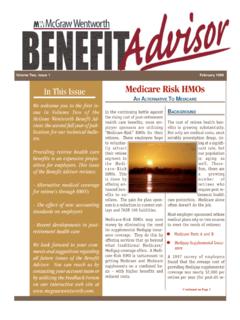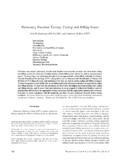Transcription of Present Status of Infrastructure Facilities in Schools in ...
1 Draft Present Status of Infrastructure Facilities in Schools in India: From National and State Level Perspective Dr. Madhumita Bandhopadhyay National University of Educational Planning and Administration 17-B, Sri Aurobindo Marg, New Delhi 110016 (INDIA). CONTENTS. Page No. Introduction 1. Earlier Researches 1. Availability of Schools and Enrolment 3. Student-Classroom Ratio 6. Availability of Physical Facilities 7-17. All weather roads 7. school Building 8. Water Facility 8. Functional drinking water facility 9. Girls' Toilet 10. Boys' Toilet 11. Condition of Classroom 11. Boundary Wall 12. Playground 13. Ramp facility 13. Electricity facility 14. Library Facility 15. Computer Facility 16.
2 CAL Facility 17. Enrolment in Schools lacking different Infrastructure Facilities 17. Conclusion 19. Reference 20. Draft prepared for Sub-Committee of the CABE on Improving Conditions of Government of Schools Present Status of Infrastructure Facilities in Schools in India: From national and state level perspective Dr. Madhumita Bandyopadhyay1. NUEPA. Introduction It is widely known that availability of Infrastructure Facilities in school has considerable impact on school environment and it is one of the important indicators for assessing whether the Schools are providing a conducive learning environment for children. During last two decades, a major emphasis has been given on improving school environment by different educational programmes like Operation Blackboard, DPEP, SSA, RMSA and so on, as it is a major factor for regular participation of students and finally resulting in improvement in their learning levels .
3 An attempt has also been made to provide adequate physical Facilities as per the needs of Schools , as recommended by education policy in India, NPE 1986. The policy has recognized that, unattractive school environment, unsatisfactory condition of buildings and insufficiency of instructional material function as de-motivating factors for children and their parents. The Policy, therefore, calls for a drive for a substantial improvement of primary Schools and provision of support services' (NPE, 1986, 15). According to this policy, primary Schools have to be provided with at least two rooms for conducting teaching learning process. Further, RTE Act 2009 has recommended that each school should be equipped with All weather building consisting of at least one classroom for every teacher and an office-cum-store-cum-Head teacher's room; barrier- free access; separate toilets for boys and girls; safe and adequate drinking water facility to all children; a kitchen where mid-day meal is cooked in the school ; playground; arrangements for securing the school building by boundary wall or fencing'.
4 In view of above recommendations, using DISE data and recent research reviews, an attempt has been made in this paper to assess the Present Status of availability of physical Facilities in Schools run by different managements, especially government, private aided and private unaided Schools . Earlier Researches Several researches (Ajayi, 2002; Hallack, 1990; Kuuskorpi & Gonzalez, 2011) conducted in different international contexts specifically link availability of Infrastructure Facilities of school and school effectiveness. According to Asiabaka (2008, 10) management of Facilities is an integral part of the overall management of Schools . The actualization of the goals and objectives of education require the provision, maximum utilization and appropriate management of the Facilities .
5 According to her the physical environment of a school is a major determining factor in the attainment of its objectives (Asiabaka 2008, 10). Importance of availability of physical Facilities in Schools and its optimum use have been a matter of concern across the globe. Several studies have already been conducted in context of India to find out different determining factors of school effectiveness and efficiency and lack of physical Facilities has been identified as one of the major problems across the states. An overview of some of these studies is being given in 1. The author acknowledges the contribution of Ms. Meenakshi Khandari and Ms. Aparna Mookerjee from NUEPA. We are grateful to Prof.
6 A. C Mehta, Head of EMIS Department for providing DISE and UDISE data some of which have not been published yet. 1. Draft prepared for Sub-Committee of the CABE on Improving Conditions of Government of Schools following paragraphs. Despite considerable improvement in enrolment, many researches (Govinda & Bandyopadhyay, 2011a, 2011b, 2011c; De 2011; Pratham, 2012 etc) have constantly raised concerns that India will have to travel a long way to achieve the goal of Universialisation of Elementary Education and implement the Right to Education Act, 2009. The Act has not only stressed on providing access to free and compulsory education for 6-14 years old children, but has also emphasised on regular and active participation of children in government Schools and improvement in their learning levels .
7 The active presence of children and their imbibing of knowledge and skills in the classroom become important issues once they get enrolled in a school . The central characteristic of meaningful access (Lewin, 2007; Govinda & Bandyopadhyay, 2009; Little, 2008) to school education is the sustained and active participation of children in teaching learning processes and classroom activities. It has been found that students who attend school regularly score higher in their achievement tests than their peers, who remain frequently absent. Although the low attendance and low learning level of children is rampant across the country, many studies found these problems are more prominent in case of disadvantaged groups (Govinda &.)
8 Bandyopadhyay, 2008; Pratham, 2012; Dreze & Kingdon, 1999). Many researches have also indicated that effective management of system as well as Schools can improve the quality of educational services that in turn, influences the access and participation of children (Govinda &. Bandyopadhyay, 2011c, Bandyopadhyay & Dey, 2011 Dayaram, 2011, Dayaram, 2013). These studies have also emphasized on availability of adequate Infrastructure Facilities and its optimum use for improving the learning environment of the school which motivates teachers as well as students for regular participation and getting engaged in teaching learning process of good quality. As mentioned in a CREATE policy brief (Bandypadhyay, Das & Zeitlyn, 2011), "absenteeism is multi- causal phenomenon" involving home -related and school - related factors.
9 While children's engagement in paid or unpaid work, sibling care etc. reduces their chance of attending school fully and perform better in classroom, the quality of services provided in the Schools , the Infrastructure and the level of teacher's qualification and training may also act as determining factors for these. The study further discusses the vicious cycle of absenteeism and repetition. These characteristics of exclusion are known as silent exclusion' in the CREATE conceptual model and eventually lead to drop- out (Lewin, 2007). The policy brief also suggests "there is an urgent need for improving the physical and academic Infrastructure , incentives, TLM. (teaching learning material), availability of teachers and their presence in the school and classroom.
10 ". Gender and caste-based stereotyping was visible in the allocation of different tasks to children in Schools covered by the CREATE study as well. Such gender and caste based discrimination increases in the Schools which are resource poor and are grappling with different problems of managing scarce physical as well as academic resources for example often it is found that girls are engaged in collecting water in case Schools are not provided with a safe drinking water facility on regular basis. Similarly, absence of boundary wall and playground hamper regular activities of school as well as can comprise children safety and security. 2. Draft prepared for Sub-Committee of the CABE on Improving Conditions of Government of Schools It is mention worthy that the socially disadvantaged children living in remote areas also remain deprived from various public services, including elementary education.








